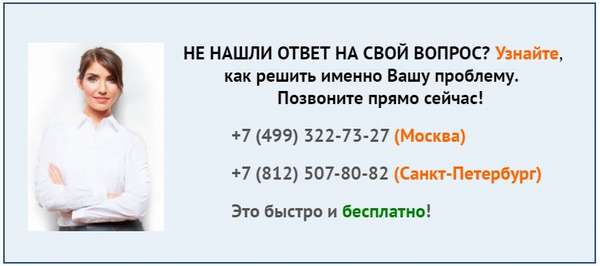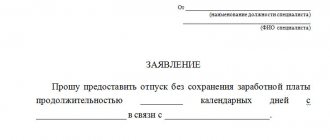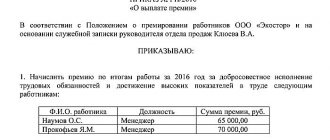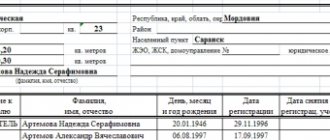Technology break concept
The working hours at the enterprise are built taking into account the specifics of the production process. Legislation in the field of labor relations establishes the employer’s obligation to provide employees with breaks, the need for which is caused by the characteristics of the activity. The rules for providing such breaks are regulated by law.
The Labor Code of the Russian Federation (Article 107) defines a break in the working day as a form of rest time. Art. 109, in addition, establishes the provision of breaks when performing work of certain categories.
The need for rest is determined by production technologies, as well as working conditions. The list of activities that require additional rest is determined by the Internal Labor Regulations.
Types of breaks:
- technological - its provision may be caused by working with harmful substances present in the air. It is used to ventilate the room,
- for cleaning – provided when performing work that causes contamination of the premises with processed products or waste from activities. Necessary to bring the premises into compliance with the requirements,
- to enter information into the information base. Used to update databases.
Technological breaks do not affect the duration of working hours, they are part of it. This provision is enshrined in the Letter of Rostrud No. PG/2181-6-1 dated April 1. 2012
The division of technological interruptions into categories is caused by their purpose.
How are overtime hours paid?
For rest and food
The duration of time allotted for meals, according to the law, is 30-120 minutes.
It depends on the length of the working day, and if it is a standard eight-hour shift, then usually an hour is given for a break. An increase may be necessary if the meal location is remote from the office and it takes time to get to and from the office. Or it is necessary for the employee to get home - such moments are regulated by agreement with the employer, and once again we note that this break is not included in working hours, that is, for example, if the working day lasts 10 hours and lunch is 2, then the time from leaving work before the end of the shift will be 12 hours. Moreover, since 2 hours of lunch time are not paid, the employee can use it as he pleases - it is not necessary to have lunch and rest.
A meal break is provided approximately in the middle of the shift, so if it lasts 8 hours, it is advisable to give it 4 hours after it starts. This is also stipulated by the internal regulations - a shift in one direction or another is possible, but within small limits, for example, to provide it three or five hours after the start of such a shift.
Reasons for providing
The presence of breaks and their duration are fixed in contracts between the employer and employees. The main document regulating work and rest time is the Labor Code of the Russian Federation. Breaks are mentioned in Articles 107 and 109, but without details.
They are specified when drawing up internal regulations of the enterprise. Usually, the time of work and rest is fixed by the Internal Labor Regulations.
This local document must provide:
- working conditions for employees and rest procedures,
- types of work and categories of employees requiring a technological break,
- number and duration of breaks.
For your information! Meal breaks are a different category from rest and warming breaks. Providing food breaks to employees is regulated by Art. 108 Labor Code of the Russian Federation.
Sample application for leave at your own expense for one day.
Is it possible to fire a pregnant woman for absenteeism? Read here.
Vacation at your own expense: can they refuse, read the link: https://novocom.org/trudovoe-pravo/mogut-li-otkazat-v-otpuske-za-svoj-schet.html
Floating lunch time
Some organizations have flexible lunch times. Each employee determines the start time of the break himself or coordinates it with his immediate supervisor. To introduce floating lunch time in an organization, it is necessary to issue an order to amend the internal labor regulations.
Attention! An employer has the right to bring an employee to disciplinary liability for using working time for personal purposes: make a reprimand, reprimand and even dismiss him on appropriate grounds (Article 192 of the Labor Code of the Russian Federation).
Is it inconvenient to read from the monitor?
Read about everything useful for the work of an accountant in the professional accounting press! Select a magazine >>
If you have a question, ask it here >>
Taking a break while working at the computer
On May 30, 2003, SanPiN 2.2.2/2.4.1340-03 standards were approved. According to their requirements, as well as the provisions of Appendix 7, work using a computer requires special conditions. Sanitary standards stipulate the need for a break lasting from 50 to 140 minutes. The duration is determined individually depending on the type of work performed on the computer and its complexity.
The procedure for granting breaks is as follows:
- if it is necessary to dial 20,000 characters, a break is given twice for 15 minutes: 2 hours after the start of work and 2 hours after the lunch break,
- when typing up to 40,000 characters - two rest periods of 15 minutes (2 hours from the start of the shift and 1.5-2 hours after the lunch break) or a 10-minute rest after each hour of work,
- when working with 60,000 characters, twice for 20 minutes (1.5-2 hours from the start of work and the same time after lunch) or a 15-minute break every hour.
Adopted on February 2, 2001, the TOI Standard Instruction R-45-084-01 regulates in detail work using a computer. According to its requirements, continuous work of this kind should not last more than 2 hours.
This daily routine allows you to take care of the health of workers and prevents excessive workload.
Watch the video. Breaks for rest and food:
Documentary regulation of breaks
Breaks should be regulated in detail by internal regulations, which indicate at what time they are provided, as well as how long they last. The same rules also list those jobs for which breaks for rest and food cannot be provided. If the job is one of these, then it will be necessary to ensure that the employee can take food directly during working hours.
But the lunch break is the easiest thing. Much more difficulties arise with the regulation of other pauses, which should also be provided for by the rules. All small smoke breaks, tea breaks and walks along the corridors - should they be decisively suppressed, or do employees still have the right to them? It depends on the specifics of the work, but this is what Article 109 of the Labor Code talks about. Mainly, such breaks are needed if the work is office and involves interaction with a computer - for example, the appendix to the Sanitary Rules and Standards recommends alternating work with and without the use of a computer. Accordingly, if there is no such rotation, the employee needs regular breaks, and they are included in working hours.
We have described the rights of employees, and it would be good if they used them and nothing more, however, in reality, everyone works with different efficiency, and some also tend to rest more than necessary. At every enterprise, management has to deal with the problem of uncontrolled interruptions that reduce work efficiency. Employees simply gather in a smoking room or somewhere else, often in groups, and do not work for a long time, arguing that they are taking a legitimate break. Over time, the number and duration of such breaks only grow, and they can last longer than the work itself. It is very difficult to combat such abuses, especially since a bad example is contagious, and if several such workers appear, then most of the rest will soon begin to neglect their duties to one degree or another - the level of labor discipline will drop.
To prevent this, it is necessary to strictly regulate breaks and prevent excessive use of them by employees. Their total duration during office work at a computer should be within 40-80 minutes with a standard working day.

Such parameters should be indicated in the schedule; if necessary, separate instructions from management can be added to them. Employees are familiarized with all these documents, they sign, certifying that they know and accept the rules, after which failure to comply will be fraught with disciplinary action. Systematic violations can even lead to dismissal.
In the rules, breaks can be defined either strictly based on time, for example, setting a break of 10 minutes at the end of the hour every two hours: from 9:50 to 10:00, from 11:50 to 12:00, and so on, or or floating. The first option is more convenient for monitoring employees if discipline is not at the proper level. If it turns out that it is already 10:20, and they are in the smoking room, then the offenders will not be able to say that they have just arrived, because there is a clearly established time at which they must be in it. The second option is suitable for more democratic companies, but in this case you can also use time tracking services for computers, with the help of which you can monitor that employees do not rest excessively.
Smoking is a separate topic; it’s not for nothing that breaks are often called smoke breaks, but because very often they are required by smoking employees. At the same time, it is far from a fact that such an employee will take fewer breaks for other needs; as a result, in reality, the useful time spent will be reduced even more. According to the Labor Code, smoking breaks - and now we mean specifically the time for smoking - are not provided for, which means you can freely fight them. Various techniques are used to fight:
- bans on smoking within the boundaries of the enterprise are fraught with the fact that employees will be forced to leave the enterprise, and even greater losses of time;
- fines;
- incentives for non-smokers;
- increasing the length of the working day for smokers - then breaks to smoke will be accepted on an equal basis with others, but those employees who use them are forced to stay in the office longer.
Technological breaks during a 12-hour working day

Features of work with a 12-hour working day are provided for in Methodological Recommendations MP 2.2.9.2311-07. 2.2.9 (approved by the Chief Sanitary Doctor on December 18, 2007). If such work is performed during the day shift at medium intensity, then sanitary standards require two lunch breaks.
Note! It is also recommended to provide four 10-minute rest periods and allow a short nap of 45-60 minutes after lunch time.
Such rules are aimed at reducing the number of stressful conditions. The consequence should be an improvement in the physical condition of employees.
The standards listed above are not generally binding, but are only recommendations. Order of the Ministry of Health and Social Development of the Russian Federation dated March 1, 2012 N 181n does not contain these instructions.
Duration
The duration of technological breaks, according to the “Letter of Rostrud dated April 11, 2012,” is initially included in the number of working hours during the day and is not added to the main schedule. The employer determines how long the break lasts.
The break should not be too short or long. The exact duration of the technological break is established in accordance with working conditions and work characteristics. It is regulated in accordance with Articles 108 and 109 of the Labor Code of the Russian Federation. The rest time is determined only by the employer.
also possible to set a break every hour , if the work requires it, this is already being considered by the employer.
When applying for any job, you need to read the employment contract and find out information about breaks. After all, if there are not enough breaks or they are not long enough, a person may become overtired. A healthy and regulated break is the key to productive work .
Watch a video about taking breaks during the workday:
Baby feeding break
The work of certain categories of citizens is regulated by separate standards in connection with the characteristics of the category of employees. Teenagers, people with disabilities, and mothers of young children need additional guarantees.
A woman with a child under 1.5 years of age has the right to be provided with time for feeding. Such a break lasts at least 30 minutes, and if there are two kids - 1 hour.
The exact length of time for feeding is determined individually depending on the circumstances. These time periods are included in the total work time and are paid based on the daily wage. No emergency circumstances in the organization can cause an employee to cancel breaks for feeding her children.
Attention! Our qualified lawyers will assist you free of charge and around the clock on any issues. Find out more here.
Short breaks
Employers are not required to provide breaks for short periods of time. This may concern unloading psychologically, smoking, drinking coffee, going to the toilet, etc. They can only be done to reduce employee fatigue. At their discretion, they will be turned on during operation. Break time cannot be more than 20 minutes throughout the entire shift. But what specific time to choose, and in what quantity, is determined by the employer.
And working conditions may put pressure on the provision of such rest. In order to spell everything out specifically, it is best to record them in local acts of the organization. If the manager is really worried about the employee’s condition, then he can even arrange a separate room for this (for example, a smoking room). This promotes a positive attitude towards the job and what they do.
Establishing types of breaks and their duration
Providing time as a break from work is regulated by the following regulations:
- the main document is the Labor Code of the Russian Federation,
- regulations,
- collective labor agreement,
- local regulations of the enterprise.
The working day schedule is fixed by internal documents. It is presented for familiarization to all employees of the organization against signature, since failure to comply with the procedure entails violations on the part of both the employee and the employer.
Alternating periods of work and rest is a prerequisite for the well-being of workers.
Numerous studies have confirmed that several short rest breaks have a positive effect on the physical condition and emotional state of working people. Accordingly, the quality and productivity of labor increases.
Both the employee and the employer must conscientiously perform their duties. Employees should not, using their rights, violate the interests of the administration.
Whatever rights are granted to employees, labor discipline must be observed. Otherwise, penalties are applied, even if the offender did not know the law.
What to do if your employer forces you to work on weekends?
What is a technological break?
Any employee should have the opportunity to rest a little, which is provided to all employed citizens by law. A technical break is introduced by the employer , since the type and duration of rest directly depend on production technology and working conditions.
A technological break is a time during which it is impossible to perform work due to the nature of the technological process.
Regulation of issues related to technological interruption is carried out in accordance with the articles of the Labor Code of the Russian Federation affecting this topic. Thus, the rest time should not be lower than the norms prescribed in the Labor Code of the Russian Federation , otherwise the employer may incur legal liability.
Responsibility for refusal to provide
If an employer does not comply with the work and rest schedule provided for by law, he commits an offense. Refusal to provide time for rest also falls into this category. The consequences are provided for by law in the form of administrative liability, as well as the imposition of penalties on those responsible.
Yes, Art. 5.27 of the Code of Administrative Offenses of the Russian Federation provides for the following types of punishment:
- warning or imposition of an administrative fine on officials in the amount of 1,000 to 5,000 rubles,
- for persons conducting entrepreneurial activities without forming a legal entity, from 1000 to 5000 rubles,
- for legal entities from 30,000 to 50,000 rubles.
Working under special conditions
There are also special conditions under which rest breaks are mandatory according to the labor code. But in addition to rest, there is separate time for heating and cooling if work is performed in cold or hot weather. Work can be carried out in rooms that are not heated. In this case, as well as in the case of working as a janitor on the street in winter, breaks are provided for at least 10 minutes so that there is an opportunity to warm up. In this case, these periods of time are subject to payment. At the same time, heating is carried out in special rooms where it is possible to remove clothes from above if necessary.
When construction of structures is carried out underground, and the ground is frozen, the break is 15 minutes after 40 minutes of work. After this, workers must go to special rooms to warm up.
In hot climates, things are a little different. These periods of time for rest will not be mandatory for the head of the enterprise, and they are unlikely to be paid. After a certain time, the employee can go to a room where the temperature will be comfortable within 25-27 degrees. But this is only if everything is agreed upon with the employer.
Types of breaks at work
Almost everyone knows that when working for eight hours you have the right to lunch. Often the schedule is drawn up taking into account this period, for example, lasting thirty and sixty minutes. Along with this break, the legislation provides for others. Conventionally, they are divided into several groups:
- general and special;
- mandatory and recommended;
- paid and not.
The first category implies that general free time is provided to absolutely all citizens, regardless of their place of service and personal needs. But special ones are given either to special employees (breastfeeding women) or to specific types of employees (for example, those who constantly work at a computer).
As for mandatory breaks, these periods of time are necessary for everyone, but the principle of providing recommended ones is determined by the company’s internal documents. For example, if an employer considers it necessary to organize rest during the day for walks in the park, he includes this in the collective agreement.
It is important to know! In most cases, breaks are paid. The exception is a prolonged absence, for example, a lunch lasting one hour. Let's say a person works from nine in the morning to six in the evening - that's nine hours, but it is indicated that from one to two everyone has lunch. Therefore, eight hours of actual work will be paid.
According to the Labor Code, a smoke break does not fall into any of these categories, but employees also have a legal right to it, unless it is prohibited by the internal regulations of the enterprise.
Firstly, there is a rest and food break, better known as a lunch break.
To maintain strength and health, each employee needs a break for rest and nutrition. Such a break cannot be more than 2 hours and less than 30 minutes.
That is, the employer cannot set a break for eating at 15 minutes, citing the fact that this time is quite enough!
As a rule, a lunch break is provided 4 hours after the start of work. But this is not a mandatory rule: a lunch break can be set 3 hours after the start of work, or it can start after 5 hours. The start time of such a break and its duration must be specified in the internal labor regulations, which apply to all employees of this organization, or determined in an agreement between the employee and the employer. By the way, the internal labor regulations should be available for your review.
During your lunch break, you can leave work - have a snack in a cafe, go home, or you can go about your business at your workplace. You use this time at your own discretion and are not required to perform work functions.
| IMPORTANT! This break is not included in working hours. If your working day lasts from 8:00 to 17:00, with a lunch break from 12:00 to 13:00, then you will be given an “eight” on your time sheet, which means that you worked 8 hours. If your shift lasts from 8:00 to 20:00 with a real lunch break of 1 hour, then you will actually work 11 hours. |
If you are prohibited from leaving your workplace during rest and meals, then such a break should be included in working hours and paid accordingly.
When production (work) conditions do not allow for a lunch break, the employer is obliged to provide you with the opportunity to rest and have a snack during your working hours (for example, install in a specially designated room the equipment necessary for cooking and heating food). The first thing to remember is that the list of such jobs (where it is impossible to provide a break for rest and food), as well as places for rest and eating, are established by the internal labor regulations. That is, this issue must be resolved officially by the employer himself. The second important point is that the duration of your work shift is not reduced by the time spent eating and resting, i.e. in fact, this time is considered working time and is subject to payment.
Secondly, these are special breaks for heating and rest
There are also special breaks during the working day (shift), which are determined by the very nature of the work - the technologies used, the organization of work. Such breaks in work are provided according to the internal regulations of the organization, which also determine the duration of the breaks and the procedure for their provision. As a general rule, this type of break is not included in working hours and is not paid, unless a different rule is established in the internal labor regulations or other local act adopted by the employer.
The purpose of such a break is to provide the employee with additional time to rest due to the specifics of the work functions performed. Examples of such breaks are:
1. breaks for gymnastics;
2. breaks provided to workers working at a forced rhythm (those who work on the assembly line);
3. breaks for professional computer users (depending on the category of work activity and the level of workload during a work shift when working with a personal computer, the total time of regulated breaks is established)1;
4. a break provided to dispatchers who control air traffic at a control panel equipped with a video display terminal - after two hours of continuous work - they are given a break of at least 20 minutes (Clause 11 of the Regulations on the peculiarities of the working hours and rest time of workers carrying out control air traffic of civil aviation of the Russian Federation, approved by Order of the Ministry of Transport of Russia dated January 30,
2004 N 10)
.
5. for intercity transportation, after the first 3 hours of continuous driving, the driver is given a special break to rest from driving on the road for at least 15 minutes; subsequently, breaks of this duration are provided no more than every 2 hours. In the event that the time for providing a special break coincides with the time for providing a break for rest and food, a special break is not provided (Order of the Ministry of Transport of the Russian Federation dated August 20, 2004 N 15 “On approval of the regulation on the peculiarities of the working time and rest time for car drivers”).
6. Tobacco industry workers are provided with special breaks in accordance with Article 109 of the Labor Code of the Russian Federation, that is, the duration and procedure for providing such breaks are established by the internal labor regulations (Order of the Ministry of Agriculture of the Russian Federation dated February 10
2003 N 51 “On approval of the Rules for the protection labor in the tobacco industry"
;
7.workers engaged in the production of alcohol, vodka, cognac, wine, beer and juices are provided with special breaks in accordance with Article 109 of the Labor Code of the Russian Federation (Order of the Ministry of Agriculture of the Russian Federation dated June 20
, 2003 N 892 “On approval of labor protection rules in the production of alcohol, vodka, cognac, wines, beer and juices")
.
8.workers employed in the starch industry are provided with special breaks in accordance with Art. 109 of the Labor Code of the Russian Federation (Order of the Ministry of Agriculture of the Russian Federation dated February 10
2003 N 52 “On approval of the Rules on labor protection for organizations of the starch industry”)
.
9.workers involved in the production of baker's yeast are provided with special breaks in accordance with Art. 109 of the Labor Code of the Russian Federation (Order of the Ministry of Agriculture of the Russian Federation dated June 20
2003 N 895 “On approval of the Rules for labor protection in the production of baker’s yeast”)
.
10. workers performing fire-retardant coating should be given 10-minute breaks every hour of work; technological operations for preparing and applying solutions should be alternated during the working week (Resolution of the Chief State Sanitary Doctor of the Russian Federation dated June 11
2003 N 141 “On the introduction into force of sanitary rules and regulations SanPiN 2.2.3.1384-03)
.
11. when working on the organization of freight transportation by rail, which is carried out in gas masks and respirators, workers are periodically given a technological break (at least 15 minutes) with the removal of the gas mask or respirator in a place free from dust or the release of harmful substances (Resolution of the Main State Sanitary Doctor of the Russian Federation dated April 4
2003 N 32 "On the introduction into force of the Sanitary Rules for the organization of freight transportation by rail. SP 2.5.1250-03")
..
The above-mentioned special breaks, determined by the technology and organization of production and labor, should be distinguished from special breaks for heating and rest, which are provided, if necessary, to the following employees:
ü working in the cold season outdoors;
ü working in closed, unheated rooms;
ü loaders engaged in loading and unloading operations;
ü other employees, if necessary.
Special breaks for warming up and rest are included in working hours and are paid on an equal basis with the actually worked (working) time. The employer is obliged to provide premises for heating and rest of employees.
Baby feeding breaks
Working women with children under the age of one and a half years are provided, in addition to the lunch break, with additional breaks for feeding the child - no less than every 3 hours of continuous work and no shorter than 30 minutes each.
This type of break is not rest time, since it has a different purpose and is associated with the birth of a child. But such breaks are also provided during the working day (shift). In addition, at the request of the woman, such breaks are added to the break for rest and food, or are summed up and transferred to the beginning or end of the working day (shift). These breaks are included in working hours and are subject to payment in the amount of average earnings.
For more information about these breaks, see the section “Labor Rights of Pregnant Women and Working Parents.”
ALL MATERIALS IN THE SECTION “RELAXING ACCORDING TO THE RULES”
History of the length of the working day and working week in the Russian Federation. Dossier
TASS DOSSIER. 100 years ago, on November 11 (October 30, old style), 1917, the decree of the Council of People's Commissars (SNK) “On the eight-hour working day” was issued.
The editors of TASS-DOSSIER have prepared material about the history of the length of the working day and working week in Russia.
In Tsarist Russia
Before the October Revolution in Russia, the first law regulating working hours was adopted on June 2, 1897. The document, signed by Emperor Nicholas II after a series of workers’ strikes, limited the working day in “factory industry establishments” to 11.5 hours, at night or before holidays to 10 hours.
The law introduced for the first time 14 mandatory holidays (13 according to the Orthodox calendar and the New Year), and also established a six-day working week.
It was legislated that for Orthodox Christians all Sundays are days off; for non-Christian workers it was allowed to replace them with other days of the week.
Already at the beginning of the 20th century, most enterprises established a 9-10 hour working day. The demand for a transition to an eight-hour working day was one of the key ones in the Russian labor movement.
After the October Revolution
On November 11 (October 29, old style), 1917, by decree of the Council of People's Commissars, an 8-hour working day was established in Russia (instead of 9-10 hours, as was previously the case) and a 48-hour work week with one day off was introduced. Reduced working hours were provided for in industries that were particularly harmful to health. On December 9, 1918, the Labor Code of the RSFSR was adopted, which consolidated these provisions.
From January 2, 1929 to October 1, 1933, in accordance with the resolution of the Central Executive Committee and the Council of People's Commissars, a gradual transition to a 7-hour working day was carried out. The working week was 42 hours.
On August 26, 1929, the resolution of the Council of People's Commissars of the USSR “On the transition to continuous production in enterprises and institutions of the USSR” introduced a five-day work week with one day off (four working days in a row, the fifth is a day off).
In November 1931, the Council of People's Commissars of the USSR adopted a resolution in which it allowed the People's Commissariats and other institutions to return to a six-day working week. On June 27, 1940, the decree of the Presidium of the Supreme Soviet of the USSR came into force on the transition to an 8-hour working day with a six-day working week (Sunday is a day off). The working week began to be 48 hours.
After the start of the Great Patriotic War, on June 26, 1941, the Presidium of the Supreme Soviet of the USSR signed a decree “On the working hours of workers and employees in wartime,” according to which mandatory overtime work from 1 to 3 hours a day was introduced. Vacations were cancelled. These wartime measures were canceled by decree of the Presidium of the Supreme Soviet of the USSR on June 30, 1945.









